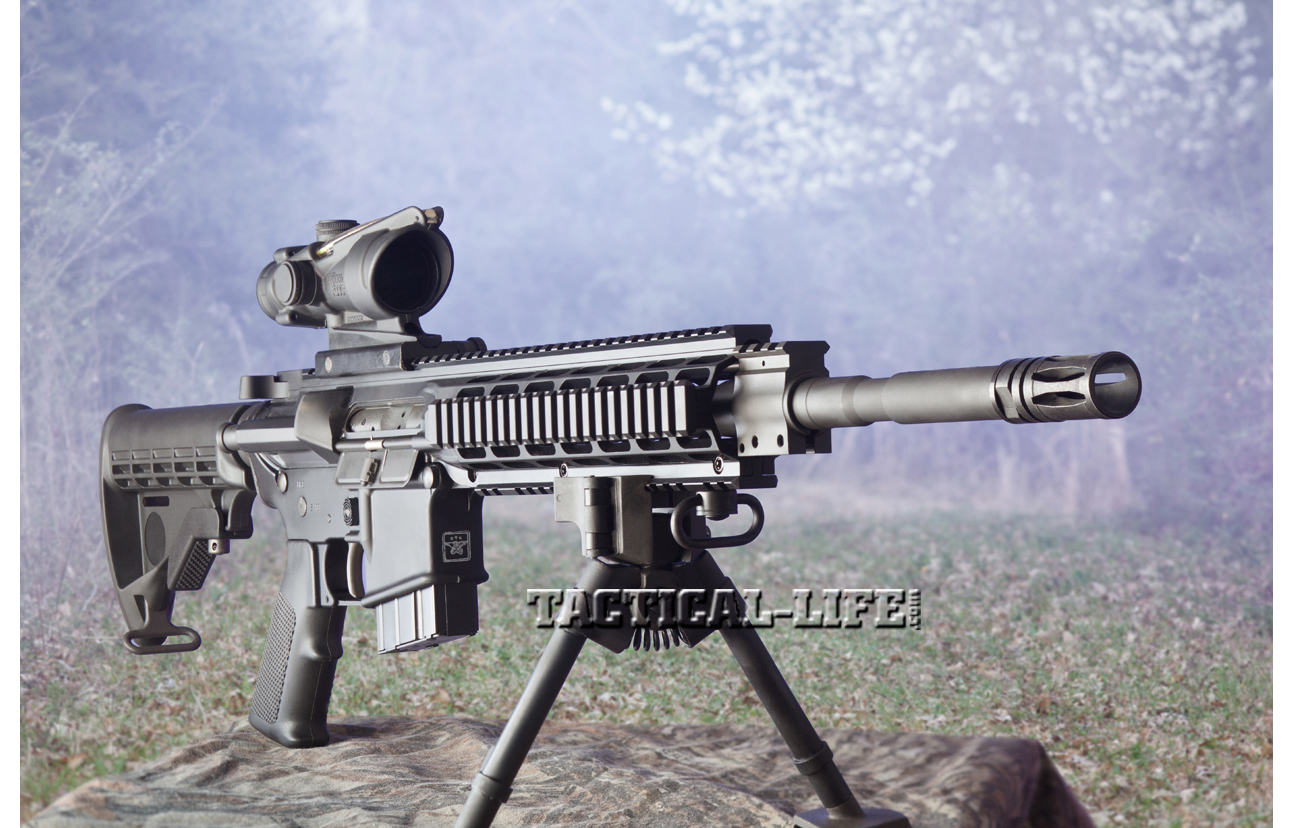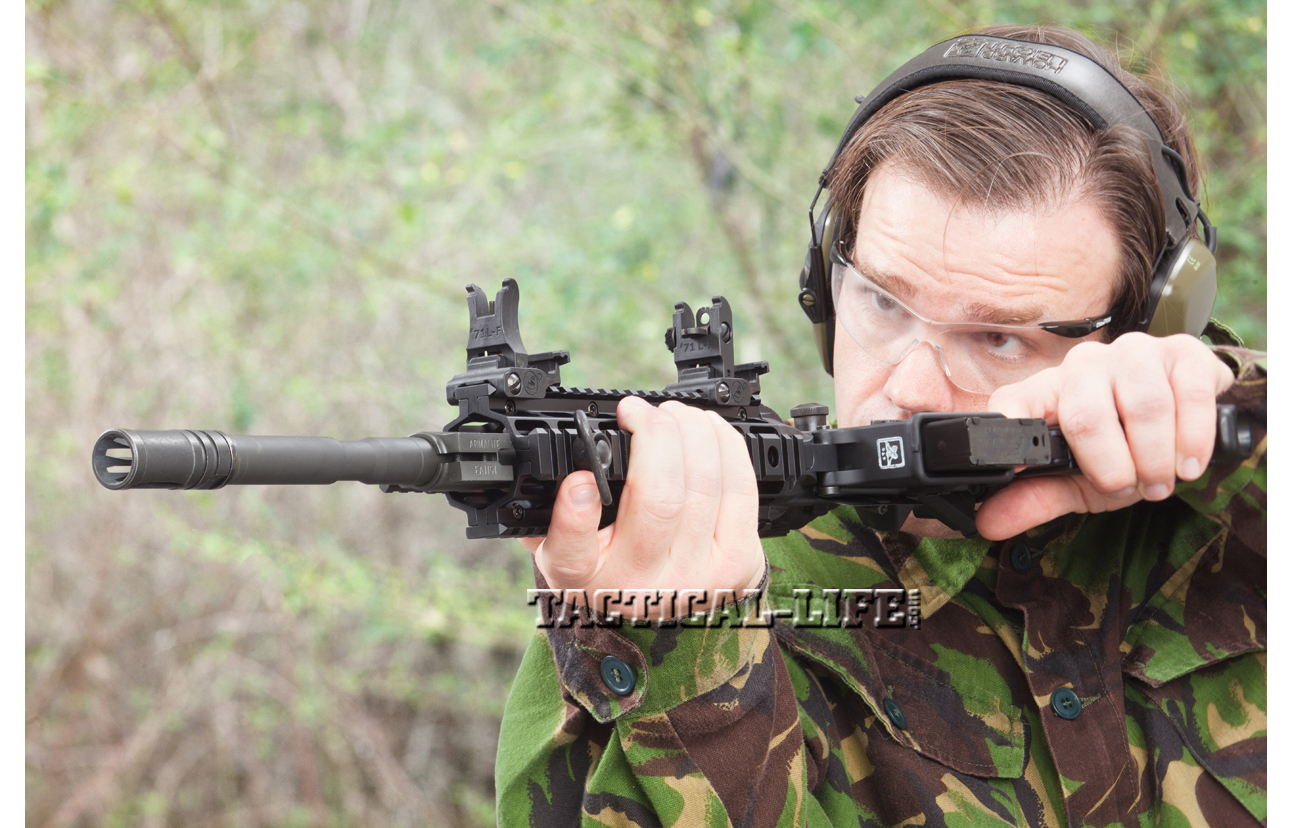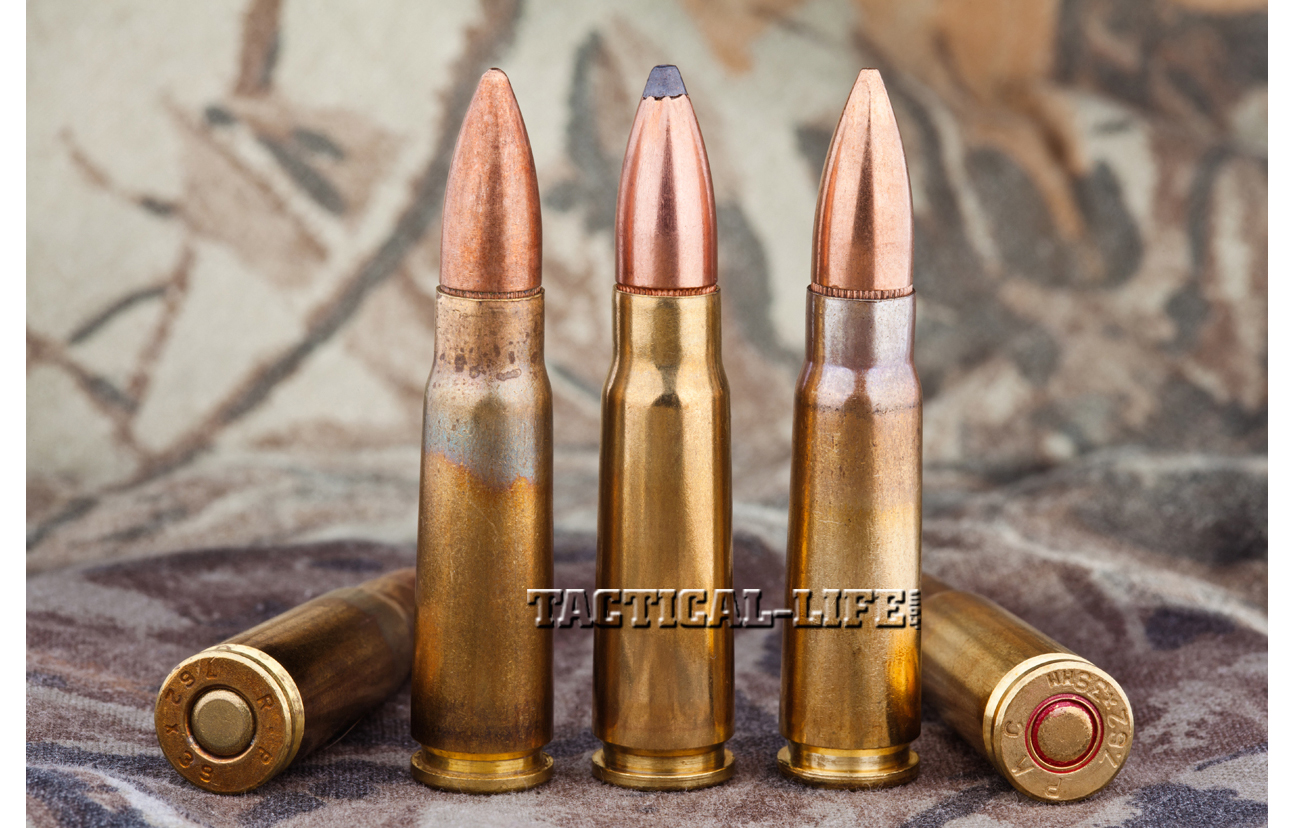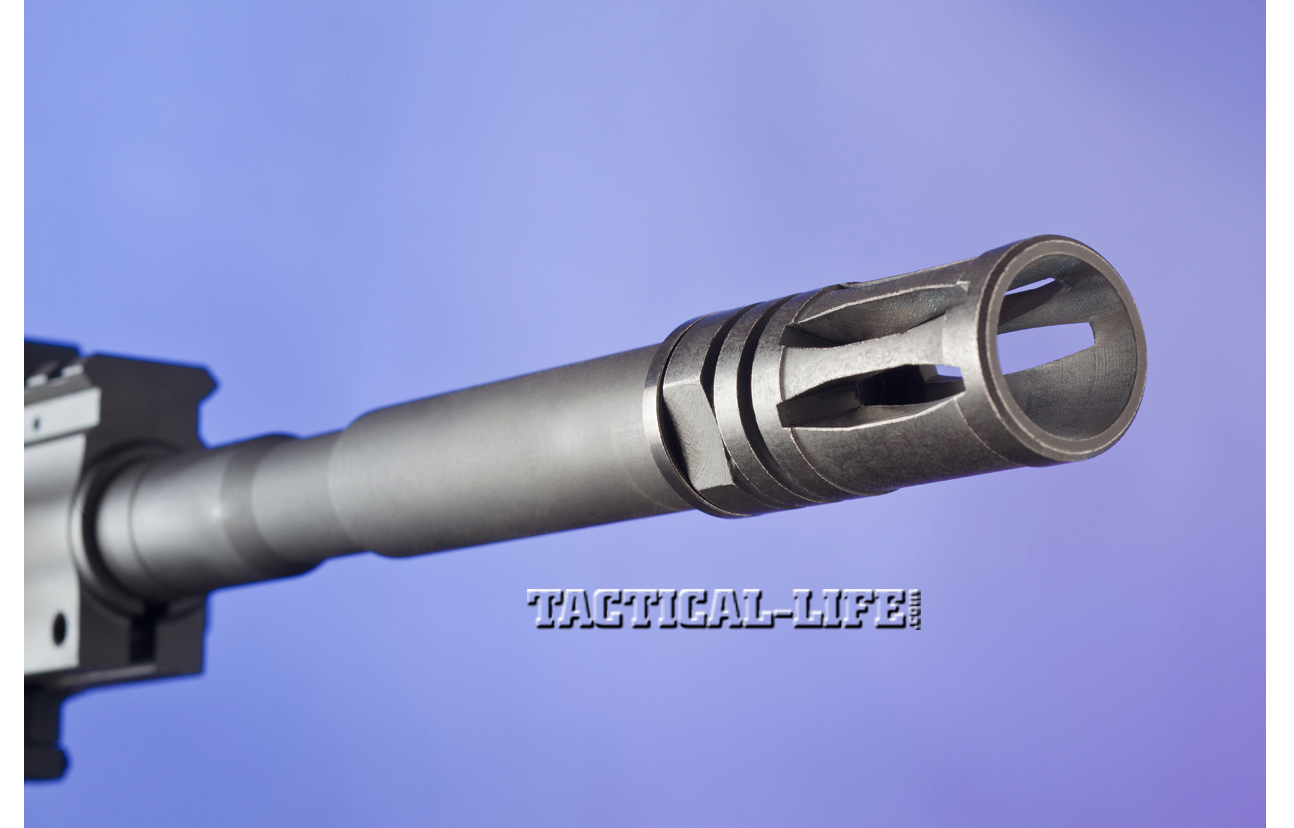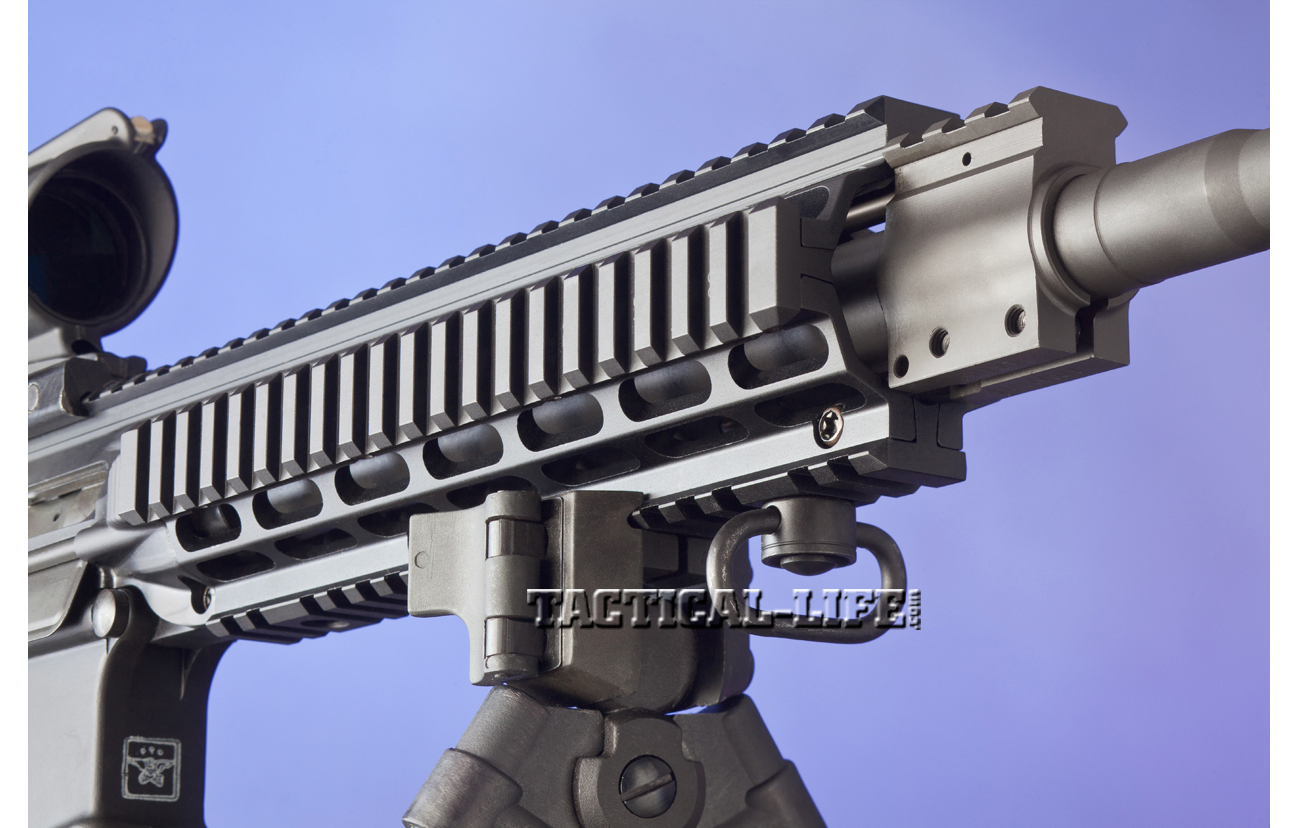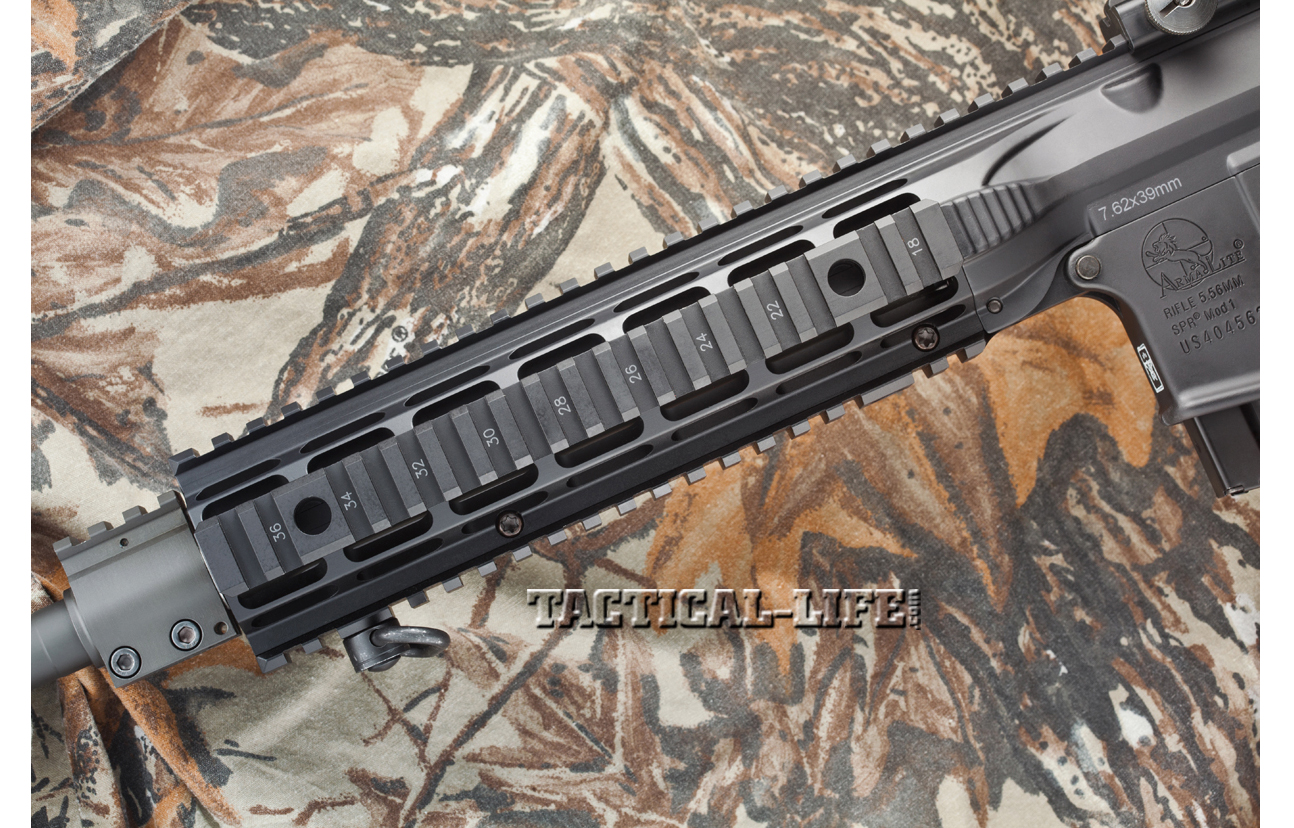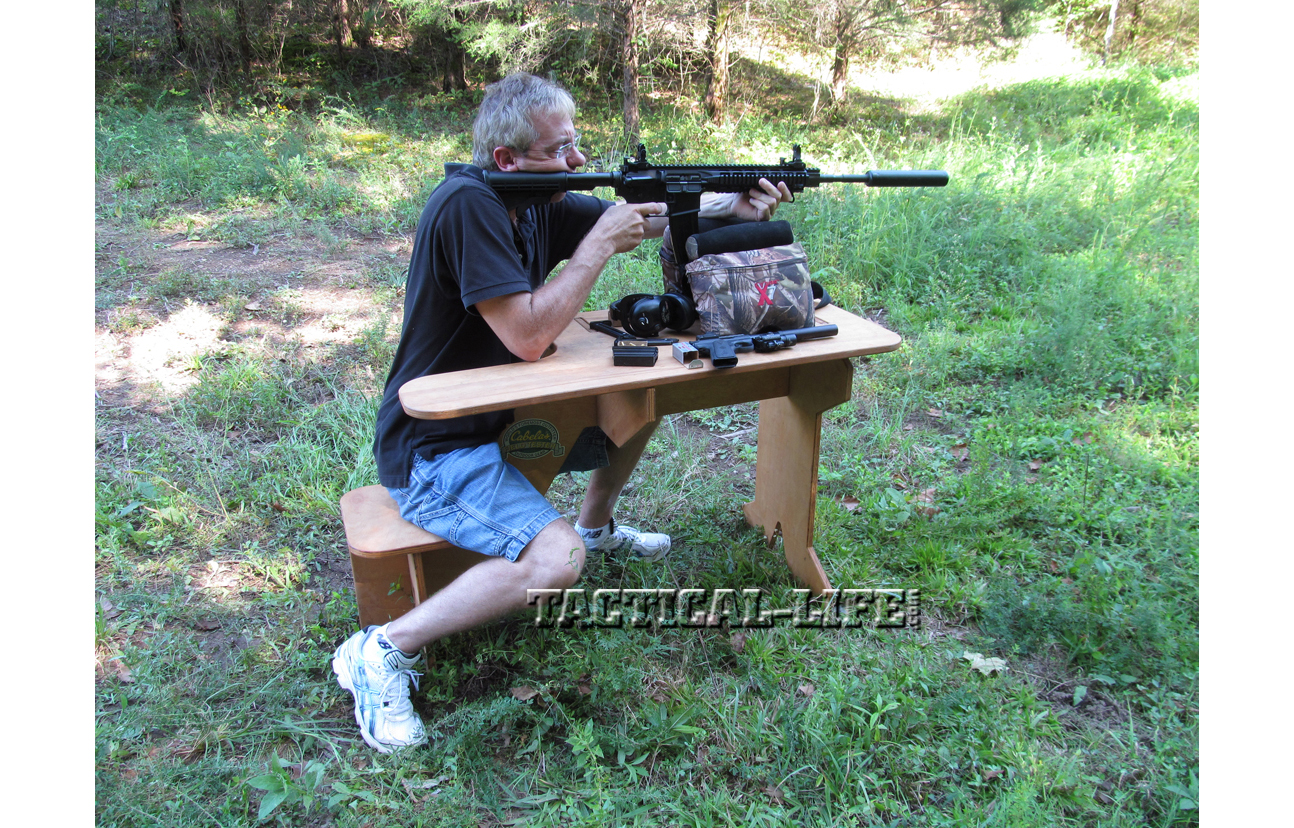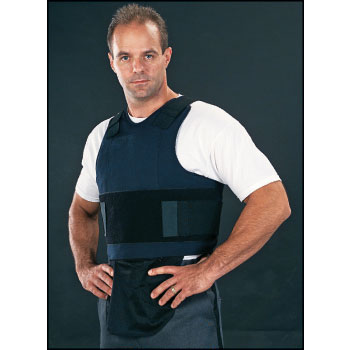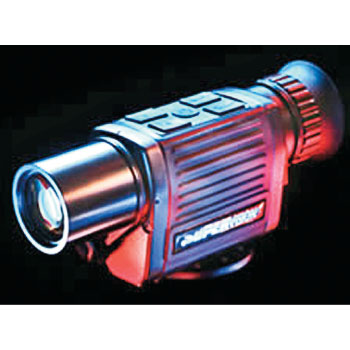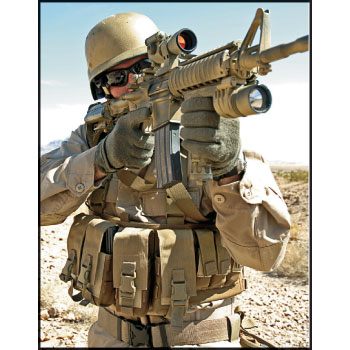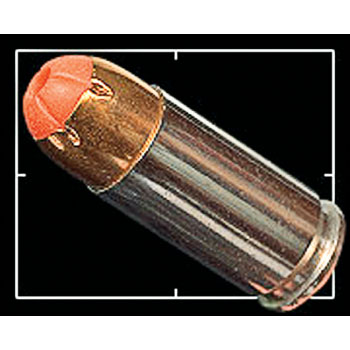Long ago proven worldwide as an ultra-rugged and reliable assault rifle, the AK-47 has served, and still serves, as the primary issue rifle for numerous national armies. In tandem with this scrappy rifle is the 7.62x39mm Soviet cartridge that feeds it. Countless 7.62mm rounds have been produced, making the AK perhaps the cheapest major centerfire rifle in the world to run.
To capitalize on the global plentitude of .30-caliber ammunition and so produce an AR as inexpensive to shoot as the AK, ArmaLite has chambered their legendary AR-15 for the 7.62x39mm.
The rifle is called the Mod 1 (and ArmaLite makes a version chambered in .223/5.56x45mm NATO). It retains many of the features found on the original AR-15, but improvements are nevertheless plentiful and widespread. Most notably, the rifle is built around a revolutionary one-piece upper receiver-and-rail system with exclusive detachable side and bottom rails. Also featured is ArmaLite’s proprietary mid-length handguard and gas-tube technology, which provides optimal gas pulse to power the 16-inch system. Like the famous Russian assault rifle with which it shares a caliber, the Model 1 is a rock-solid reliable rifle.
Advertisement — Continue Reading Below
Rifle Details
The Mod 1’s barrel is tipped with an A2-style flash hider, which is mounted via the most widely used .62 x 24 threads-per-inch attachment for .30-caliber suppressors. The barrel measures 16 inches and is rifled with a 1-in-10-inch right-hand twist. To smooth out machining tool marks, the chrome-moly vanadium and chrome-lined barrel was twice lapped. Externally, the barrel features an M203 step-down contour and a manganese phosphate finish to withstand the rigors of mil-spec salt fog test protocols.
Paying attention to consumer demand, ArmaLite chose to mount a gas block on the barrel that incorporates a Picatinny rail top section. This is a versatile option for front sight mounting, and it obviates the need for the traditional A-2 style combination front sight gas block.
Advertisement — Continue Reading Below
Farther back, the Mod 1 deviates from the prototypical AR-15. The upper receiver is a monolithic top rail and handguard. This forged flattop receiver continues from the charging handle to just behind the carbine-length gas block, which basically gives you an 8-inch handguard. I like the way the receiver makes an attractive angled transition between the front of the ejection port to the beginning of the side rail sections. The continuous top rail spans a full 14.75 inches, and its “T” marks are laser engraved. Side and bottom rail sections give you 8.37 inches of space to mount accessories. In between rail sections are two rows of elongated vents to help dissipate barrel heat. The vents do an adequate job of allowing air to circulate to cool the barrel, but the handguard on the model I tested did not have heat shields. Heat shields or not, I had to don a left-hand glove to hold the handguard after a couple of quick magazine dumps. A vertical foregrip would be an advised accessory in a rapid-fire situation.
To accommodate assembly, the side and bottom rails are attached to the top rail with Allen head screws. These bolt up solid and add to the rigidity of the top rail. The net effect is that the Mod 1’s accessory mounting platform is rock solid. In the past, I’ve attempted to mount large scopes whose mounts straddle the flattop upper receiver section and a separate Picatinny rail handguard. Even though they matched in height, there was too much flex between the two separated rail sections for successful optics mounting. Groups at 100 yards were erratic and hovered around 12 MOA. When the scope mounts were moved to a position on the receiver’s Picatinny rail section, groups shrank to approximately 1.25 MOA. The Mod 1’s continuous, solid top rail gives you a lot more options for optics mounting that will hold zero.
A nice finishing touch to the handguard is its swivel mounting positions. An inch from the front and rear of the top and left side rail section are flush-cup swivel mounting holes. These will allow you to mount your sling in a traditional muzzle-up transport position or lay the weapon flat when slung across your back in a muzzle-down carry. These are just two carry methods, since your sling mounting preferences may vary.
Advertisement — Continue Reading Below
A Look At The Lower
Just like the upper receiver, the lower receiver is forged 7075-T6 aluminum milled to its final dimensions. Anodizing the aluminum on the upper and lower gives the metal an extra degree of hardness as well as corrosion and abrasion resistance. The lower features a six-position M4-style extension that wears a mil-spec adjustable buttstock. Also mil-spec is the rifle’s A2 pistol grip. The charging handle is ArmaLite’s standard fare. Upgrading from mil-spec, ArmaLite fitted the Mod 1 with what the company calls their Tactical Two Stage trigger. The first stage take-up requires 3.5 pounds of pull, with an additional 2.3 pounds required to break the sear on the model tested. The trigger pull is consistent, smooth on the take-up for the first stage and relatively crisp in the second stage. Few factory ARs meet my standards for acceptable trigger pull, but this Mod 1 is an exception. The extent of my inveterate tinkering would stop with a dab of grease on the trigger sear and disconnector. It’s that good.
The price you pay for a monolithic top rail is small in regard to weapon weight. The Mod 1 tips the scales at 7.4 pounds. With the stock extended, the total weapon length is 36 inches. Collapsed, the overall length is 32.75 inches.
Advertisement — Continue Reading Below
From The Bench
A well-built rifle deserves a thorough wringing out, and the Mod 1 is no exception. To gauge this weapon’s accuracy potential, four factory loads and four handloads were fired at 100 yards from a bench. Several five-shot groups were fired on target, and 10-round strings were recorded by chronograph. For testing I attached an Advanced Armament Corporation 7.62mm Cyclone suppressor and, as an optic, a Trijicon 5-20X Accupoint.
The first factory load I fired was Federal’s 123-grain Spire Point, which averaged a velocity of 2,192 fps. The load’s extreme spread was 22 fps, and the standard deviation was 7 fps. The Federal’s low SD showed up in accuracy testing, which produced a best group of 0.97 inches. The average for all groups was 1.34 inches.
Advertisement — Continue Reading Below
Next was Remington’s 123-grain full-metal-jacket load. It averaged a velocity of 2,231 fps, a standard deviation of 13 fps and an extreme spread of 47 fps. The tightest group measured 2.24 inches.
Hornady’s Zombie load for 7.62x39mm is a steel-cased round loaded with their 123-grain Z-Max bullet. The average velocity was calculated at 2,104 fps, the standard deviation at 20 fps and the extreme spread at 59 fps. Indicative of this velocity spread, the average for all groups measured 1.51 inches. The smallest group spanned 1.25 inches.
The last factory load was PMC’s 123-grain FMJ. It produced an average velocity of 2,154 fps. Surprisingly, this load produced a relatively low standard deviation of 9 fps, but this wasn’t reflected in group size. The group average was 3.45 inches, with the smallest measuring 2.19inches.
Handloads were developed with once-fired full-length-sized Federal brass. All cases were primed with Winchester large-rifle primers. The first handload contained 24.3 grains of H4198 driving a 123-grain Hornady Z-Max at 2,107 fps. Its average group size was 1.15 inches, and the tightest measured 0.87 inch.
Advertisement — Continue Reading Below
Switching to 135-grain .308 Sierra Match Kings was enlightening, since the smallest group measured 2.48 inches. Pushed by 23.1 grains of IMR 4198, this load load averaged 2,228 fps.
Moving up in weight, I fired .308 Nosler Ballistic Tips weighing 150 grains to an average speed of 2,020 fps. The standard deviation was 11 fps and 29 fps for an extreme spread. Driving the Ballistic Tips were 24 grains of Reloader 7. The smallest group measured 1.84 inches.
Loading bullets heavier than the normal 123-grain proved problematic for this rifle’s 1-in-10 twist rate. The problem was further evidenced by several .308 155-grain Hornady A-Max bullets. The load consistently grouped to 2.5 MOA, with the smallest five-shot group measuring 2.62 inches. By comparison, all four groups fired measured less than 2.7 inches. Driven by 22 grains of H4198, the A-Max’s average velocity was 2,000 fps when driven by 22 grains of H4198.
Advertisement — Continue Reading Below
Overall Results
Nevertheless, the worst groups fired from the Mod 1 approximate the best I have ever fired from an AK-47. Moreover, when you stoke this rifle with its preferred loads, it is truly capable of sub-MOA accuracy.
Accuracy testing was just one of the uses to which my test Mod 1 was put. Returned from the range, I mounted on the rifle a 4X Trijicon ACOG, sighted it and handed it to my 16-year-old son to work on a series of steel targets at ranges between 25 and 100 yards. As quickly as I could load a 20-round magazine, he was ready for another. This continued until he had to don a welder’s glove to keep shooting. After 140 rounds, we swapped, and I ran through three magazines. On a lark, I loaded five rounds of Hornady’s 123-grain Zombie and selected a clean 100-yard target. Even limited with a 4X optic, I was able to keep all five rounds under 2 inches with the gun smoking hot.
Advertisement — Continue Reading Below
If you are a fan of the legendary 7.62mm Soviet Bloc cartridge and want the ultimate carbine, the ArmaLite Mod 1 is the most accurate 7.62x39mm semi-auto weapon I’ve ever fired. You can’t go wrong by choosing it as your go-to carry rifle. For more, visit armalite.com or call 800-336-0184.
